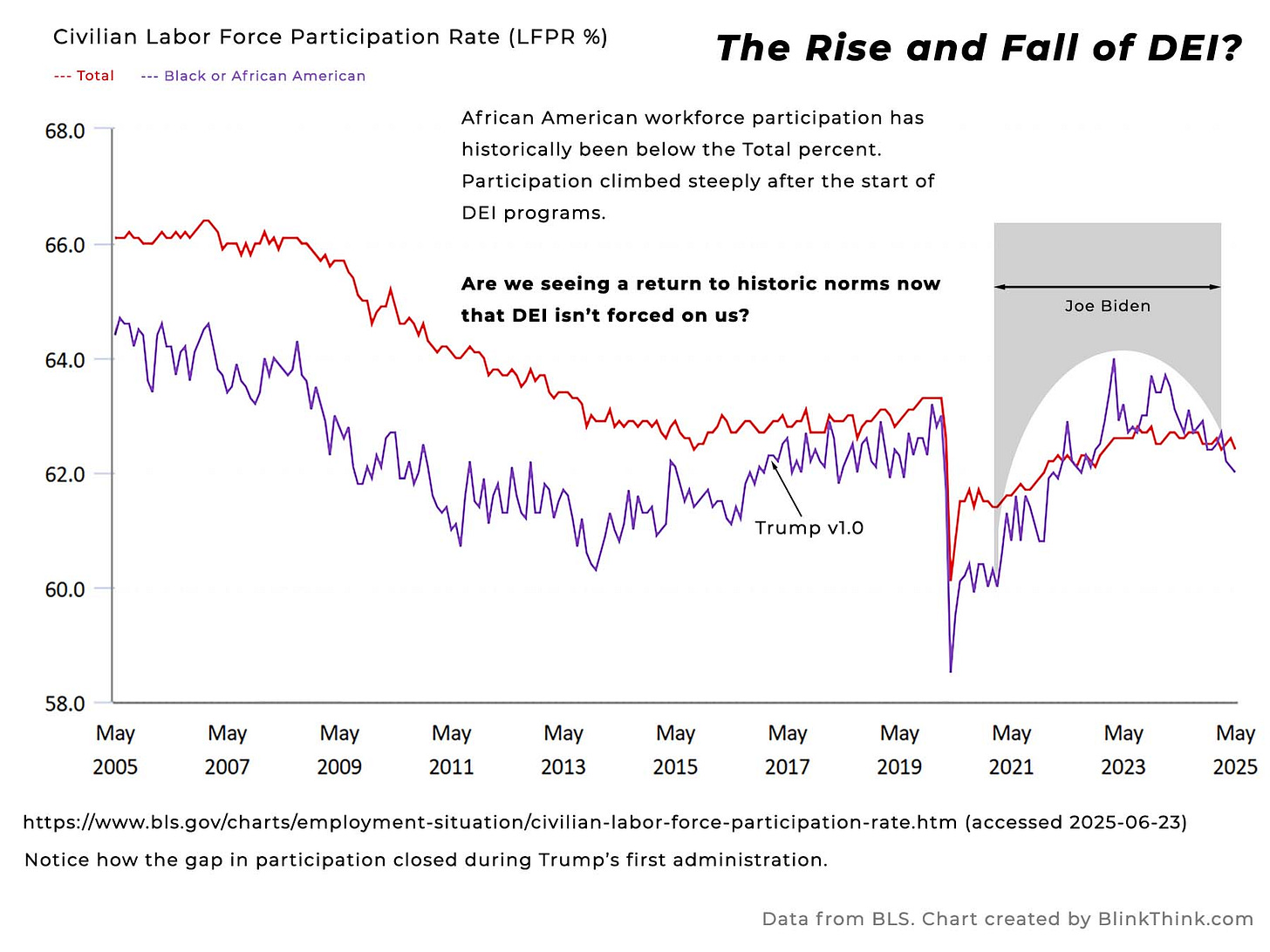African American workforce participation has historically been below the Total percent. Participation climbed steeply after the start of DEI programs. Are we seeing a return to historic norms now that DEI isn’t forced on the market?
The U.S. Bureau of Labor Statistics (BLS) defines the Civilian Labor Force Participation Rate (LFPR) as the percentage of the civilian noninstitutional population aged 16 and older that is either employed or actively seeking employment.
Stay with me here…
The “noninstitutional” population excludes students, people in prison, nursing homes, active-duty personnel, and people who have given-up looking for work.
For whatever reasons, “Black or African American” participation has been below the Total Average and White, Asian, and Hispanic rates.
Then Joe Biden and DEI hit the scene.
Black participation climbed steeply and stayed historically high - beating White participation for the first time in the last 20 years of the chart.
As Biden’s term ended and DEI initiatives fell out of favor with employees, shareholders, and most boardrooms, the Black participation started dropping.
Black workforce participation is again below the total average participation rate, where it has been for the past 20 years.
Was the temporary and dramatic increase in Black LFPR a result of forcing DEI policies on the marketplace?
Some might argue that participation increased because DEI programs removed a perceived systemic racism that historically kept Black participation lower than the average.
But notice how Black LFPR closed the gap organically during Trump’s first administration. That is what happens when you allow the free market and individuals to make decisions without Big Brother overwatch or threats from the Left.
Here’s the link to the BLS data and chart to look at the full dataset and compare to other trends.


